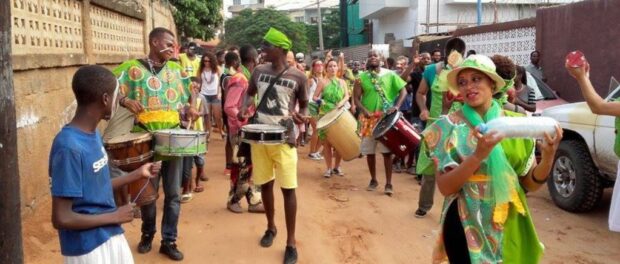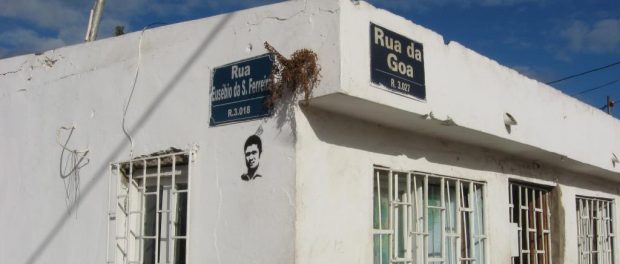
This is the final article in a three-part series on the connections between Rio de Janeiro’s favelas and Maputo’s caniços, focusing on history, land regularization, and culture.
The first article in this series drew a parallel between Rio de Janeiro’s favelas and Maputo’s caniços in terms of their emergence and their roles in divided cities, while the second article focused on the common challenges faced by these communities. But despite the challenges, like favelas, caniços are a space of intense cultural activity and immense creative potential. Just as funk music is the cultural flagship in favelas, marrabenta is a typically urban rhythm commonly associated with these Mozambican communities. But the similarities go far beyond that. For example, kizomba is a couples’ dance from Angola and Cape Verde that is also widely enjoyed in Mozambique, and in which dancers move back and forth as well as side to side. Caniços are Mozambique’s space for kizomba and for dances that were developed as forms of colonial resistance and which were brought from various parts of the country. Likewise, favelas are Rio’s space for samba, rap, and jongo—also dances and practices of resistance that combine knowledge from various elements of the flow of migrants into the big city.
Mafalala, the most celebrated of Maputo’s communities, is one of the birthplaces of marrabenta, and is also strongly associated with carnival: during the last weekend of February this year, while carnival took place in Rio de Janeiro, the Chapa 100 bloco’s parade took place in Mafalala, accompanied by local dance groups and various types of cultural displays. The relationship with carnival is not the only point of overlap: just like our favelas, Mafalala is also the birthplace of soccer players, writers, and musicians. For each Eusébio, a soccer player on Portugal’s national team who was born in Mafalala and is considered one of the best of all time, we have an Adriano, born in Vila Cruzeiro; for each José Craveirinha and Noémia de Sousa, the greatest Mozambican poets and also from Mafalala, we have Carolina de Jesus, a great Brazilian writer who grew up in a favela in São Paulo. Mafalala furthermore functions as a space of resistance and political contestation: it was the site of the main articulations in the anti-colonial struggle, housing two prominent revolutionary leaders who became presidents after independence: Samora Machel (for whom a community in Rio’s Complexo de Manguinhos and a school in Complexo da Maré are both named) and Joaquim Chissano.
The similarities do not stop there: the NGO IVERCA, founded in Mafalala, found a way to preserve the history of the region, recover residents’ self-esteem, and generate income locally in the form of guided tours of the community, in a similar form to the work of Cosme Felippsen and Gizele Martins, who are residents of Providência and Maré, respectively, and the creators of Stroll of the Favelados tours. Both initiatives have the aim of changing the negative stigma that surrounds the area in question, to reaffirm its historical importance, and to value the personal experiences of residents, in a challenge to safari-type tours. These types of tours aim to reaffirm favelas and caniços as solutions and as resistance.
In addition to the tours, IVERCA promotes sports activities with the community, organizes cultural festivals, and runs a community library (similar to community libraries in Salgueiro and Alemão). It is also currently developing research and documentation projects on local cultural heritage for the construction of the Mafalala Community Museum. The preservation of the locale’s history and inhabitants’ memory is similarly present in museums such as the Sankofa Museum in Rocinha, the Evictions Museum in Vila Autódromo, Museu de Favela in Cantagalo and Pavão-Pavãozinho, and the Maré Museum.
In an interview with O Globo, Ivan Laranjeiras, the founder of the NGO, summed up the probable cause of so many similarities: “The cultural and political history common to the countries colonized by Portugal crystallized in the memory and the identity of certain places. We can speak of Mafalala the way we speak of neighborhoods in Angola, Guinea-Bissau, Cape Verde, and even Brazil.” Similarly, we can speak of Maputo the way we speak of Rio de Janeiro, be it in terms of cultural assets and potentials, or in terms of challenges (and solutions) related to upgrading and territorial regularization.
This is the final article in a three-part series on the connections between Rio de Janeiro’s favelas and Maputo’s caniços, focusing on history, land regularization, and culture.


